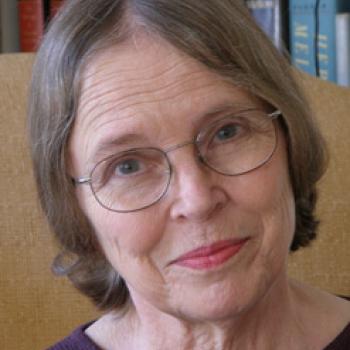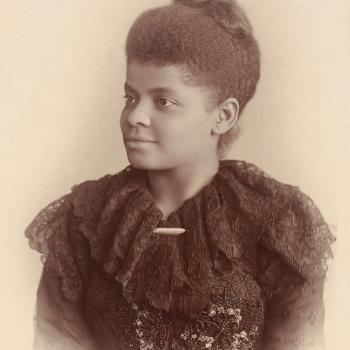
Alex Haley's first notable work was as editor of The Autobiography of Malcolm X. He is most remembered for Roots: The Saga of an American Family, which earned a Pulitzer prize in 1976, and then became a very successful television mini-series in 1977. The story, about African slaves brought to America, was based on Haley's search into his own ancestry. Queen, a sequel to Roots, followed in 1993.
Have students explore their own roots by interviewing family members. Students then use their family history as a basis for their writing.
- First, ask students to identify family members who could share a detailed and interesting family story. Then, have the class brainstorm a list of appropriate questions to "jumpstart" the interview. (Help students think about using both open-ended questions such as "What do you remember about...?" or more specific questions, such as "Where were your parents born?")
- Have students select and interview (by e-mail, regular mail, telephone, or in person) one or two people.
- Ask students to use their interviews as a basis for writing a fictional account of their roots, in the way Haley's Roots was based on his own family history.
The foundation provides a variety of community and educator resources. Teachers can find information on genealogy, biographies of Haley and Kunta Kinte, timelines of African-American history, and more.
This teacher's guide is provided by Random House publishers. The page includes discussion questions, as well as a variety of activity suggestions for the classroom.
This website offers tips to get you started researching your own family history. Included is information about organizing the information you already have, using military records, census data, libraries, and other resources in your research, and sharing your family history.
The Genographic Project traces human ancestry through DNA. Individuals can learn about their own history by buying and using a kit prepared for the project.

Seymour Simon has written 200 books for children, on a wide range of topics such as anatomy, astronomy, geology, animal life, and weather. More than half of his titles have earned praise from the National Science Teachers Association. Simon's books have made science fun for children, through a combination of clear, easy-to-read factual information and beautiful photographic images.
Have your students select and explore a scientific topic in detail using Seymour Simon's nonfiction science books. Students then use what they learn to write original poetry on the topic.
- Begin by reading a selection of Simon's books with the class and then having each student select one. Students can also explore Simon's books independently before making their choices.
- After students have selected a book and read it, have them create a list of important ideas, details, facts, and vocabulary from the text.
- Ask students to conduct additional research into the main topic of the book they selected. Students can use the Internet, if available, or the library. Have students use their research to add to their lists.
- Finally, have students visit the Acrostic Poems tool. Have students create an original acrostic poem using the list of words and topics they created earlier. Alternately, students can use the Acrostic Poems mobile app.
Simon's official website offers information about upcoming books as well as science links and stories.
This Houghton Mifflin page features brief biographical information that is written for students. It offers a discussion activity using a Simon quotation.
This page from Reading Rockets includes film clips in which Simon talks about his books and his writing. The page includes links to biographical information and other resources.

The publication of the modern paperback began in 1935, with the publication of the first ten "Penguin" books. Paperback books provided a source of good-quality writing and literature, but at a lesser cost than traditional hard-bound books. In 2003, U.S. sales of trade and mass-market paperbacks exceeded $3 billion. Although in recent years the sale of discounted hard-bound books has had an effect on paperback sales, they continue to provide readers with an inexpensive alternative.
Promote independent reading among your students by organizing a paperback book swap in your classroom. Alternatively, you may want to invite another class or all the classes at your grade level to participate.
- Send a letter home to families asking for donations of students' favorite paperback books, including novels and nonfiction titles, for students to trade.
- Explain to students that they will swap their books with one another. (You may want to have a selection of used books available for students who cannot donate a book.)
- Have students use the interactive Book Cover Creator to create an illustrated book jacket for their book that provides information about the book's author, subject, plot, characters, and other important details. Ask them to include a synopsis or review of the book to add to the jacket. See these tips for more uses of this interactive.
- After the jackets have been finished, display the books in your classroom and invite students to make their swaps.
This website offers a variety of resources related to paperback books. Included are links to author information, book publishers, thematic book lists, and Web resources.
This Smithsonian Magazine article explains how the inexpensive availabilty of paperback books changed the reach of classic writers, widening their readership and the public's interest in their work.
This printable resource features a list of activities students can complete after reading a paperback novel. These are great alternatives to a traditional book report.
The Penguin Group publishers offer this often colorful company history in a timeline format.

Natalie Babbitt was born and raised in Ohio. As a child, she spent a great deal of time reading and drawing. She always wanted to become an illustrator, and eventually studied art in college. In 1966 Babbitt illustrated a children's book written by her husband, called The Forty-ninth Magician. With the encouragement of her editor, Babbitt went on to write and illustrate over a dozen children's novels, picture books, and collections on her own.
Many of Natalie Babbitt's books address the concept of immortality, an issue that has intrigued humanity for centuries. From the ancient Egyptians' determination to reach the afterlife, to the more recent quests to locate the mythical "Fountain of Youth," history offers numerous examples of humankind's attempts to achieve immortality.
- Have students research these and additional beliefs from around the world, and then compare them to Babbitt's vision in Tuck Everlasting.
-
Have students consider questions such as:
- What are some similarities and differences among these different views?
- Why do people find the prospect of eternal life so intriguing?
- What would be the positive and negative aspects of immortality?
- After considering the issues, have students compose a short story, myth, or poem that addresses immortality.
- Finally, have students illustrate their works in a style similar to Babbitt's black-and-white line drawings.
This Scholastic biography for the author includes a link to an interview transcript and a list of her works.
Glencoe offers this reproducible teaching guide. It includes an author biography, vocabulary list, graphic organizers, and additional resources.
The site provides information about the book Tuck Everlasting and its author, Natalie Babbitt. In addition, there are links to activity ideas, online quizzes, discussion questions, and lesson plans. There is even a comparison to the Disney movie of this book.

At 17, Ernest Hemingway began his literary career as a newspaper writer. In 1926, his first major work, The Sun Also Rises, was published. This novel, as well as A Farewell to Arms and For Whom the Bell Tolls, were based on his experiences in World War I and the Spanish Civil War. Considered to be one of his best works, The Old Man and the Sea was published in 1952, two years before he was awarded the Nobel Prize in Literature.
Have your students examine the ways different authors treat the subject of war in their writing.
- Have your students read For Whom the Bell Tolls or A Farewell to Arms, as well as a war novel by another author. Some choices include Stephen Crane's The Red Badge of Courage, Erich Maria Remarque's All Quiet on the Western Front, or Walter Dean Myers' Fallen Angels.
- Then ask individual or small groups of students to compare and contrast the way the two authors have depicted war in their novels, using the Interactive Venn Diagram. Students should examine ways the authors use figurative language, characterization, point of view, and other plot elements to tell the story.
- Finally, have students share their Venn diagrams as a whole group.
You may wish to use this activity as a term project and have students use their research to write comparative essays on the two chosen novels. Have them use the Compare & Contrast Map to plan their work.
PBS offers this collection of Hemingway resources. There are virtual tours, images, and information about key locations in his life, including Spain, Africa, Key West, Cuba, and more.
This page features information about Hemingway's Nobel Prize. Included are links to a biography, his presentation speech with an audio clip, a critical article, and other information.
The website of the Ernest Hemingway Foundation includes a variety of resources on the author.
The National Portrait Gallery offers this exhibition of images and information from Hemingway's life. The site includes sections on Hemingway's beginnings in Paris, as well as the middle and final years of his literary career.

In the post-Civil War era of the late 1800s, Ida B. Wells became a leader of the anti-lynching crusade, despite threats to her own safety. After working through college, Wells became a writer and part owner of a Memphis newspaper, where she was threatened for publishing articles critical of lynching. After moving to Chicago, she continued to speak out and write about southern lynchings and became a founder of the National Association for the Advancement of Colored People.
Ida B. Wells' work as a journalist provided a public forum for her crusade against lynchings and other violations of basic human rights. Have your students explore some of the ways that journalism has contributed to the advancement of human and civil rights causes around the world by spreading information and affecting public sentiment.
- First, brainstorm a list of human rights issues from current events or from events you've studied in class.
- Have students break into groups and select topics from the list. Each group should research their issue in depth, uncovering the facts on both sides of the issue, the names of people and places involved, and related images.
- Using the current newspaper, examine the ways that journalists cover a story, including factual articles, editorials, and photojournalistic essays.
- Finally, have each group create articles for a classroom newspaper using the ReadWriteThink Printing Press.
Publish the newspaper for the school or local community, and plan a trip to a local news office for students to share their work with and get career information from the editors there.
This PBS resource includes a biography, as well as a bibliography of suggested reading and books by Wells.
This page, from Duke University, provides biographical information about Wells and her anti-lynching crusade.
This information about Wells is provided by the National Park Service's Historic Places of the Civil Rights Movement.

Author Patricia Polacco was born in Lansing, Michigan. Her writing is inspired by her rich Russian, Ukrainian, and Irish cultural heritage. As a child, Polacco struggled to learn to read and learned that she was dyslexic at the age of 14. In her stories, she shares with readers her childhood, her struggles and triumphs in school, and her diverse cultural background.
Have your students share family stories of their own by writing original poems and reviewing parts of speech using the Diamante Poems tool.
- Begin by having students brainstorm important or special childhood memories or people. Examples might be a grandparent or other relative, a memorable trip, or a hardship they have overcome.
- You can also have students explore their memories with the Exploring and Sharing Family Stories lesson.
- Then have each student select the topic they will write about and access the Diamante Poems tool.
- Using the tool, students choose adjectives, nouns, and -ing words describing the topic they've selected to create a diamond-shaped poem.
A moving piece by Patricia Polacco on a teacher who had a positive influence on her life.
In this Reading Rockets resource, students can watch a video interview with Patricia Polacco online or read a transcript of the interview. They can also access a short biography of Polacco and a list of selected children's books she has written.
Patricia Polacco's site offers information about Polacco and her books for both teachers and students, including activity ideas for teachers, coloring pages and puzzles, and biographical information.
Start your author study by reading a short biography of Patricia Polacco and choosing some of her books to read . Then use the activities and lessons included to have fun with her culturally diverse characters and stunning illustrations.

Chris Van Allsburg always wanted to be an artist. Though not encouraged as a youth, he developed his talents as both an illustrator and an author. His picture books offer stories of adventure, often with unexpected points of view, and illustrations that captivate both child and adult readers.
Point of view is a common theme in Van Allsburg's writing. Invite your students to explore varying points of view by rewriting a traditional story.
- First, brainstorm with students a list of well-known stories or fairy tales, such as The Gingerbread Man, Cinderella, or The Three Little Pigs.
- Share some books that are written from an alternate point of view, such as Jon Scieszka's The True Story of the Three Little Pigs.
- Next, invite students to select and rewrite a story. For example, they could write a Cinderella story from the stepsisters' point of view, or use the interactive Fractured Fairy Tales tool to rewrite one of three given fairy tales.
- Finally, have students illustrate and share their stories. Alternatively, students can share their stories as a puppet show or a reader's theater performance.
See the Fractured Fairy Tales page for more information about this tool along with additional activity ideas.
Van Allsburg's official site provides links to the author's biography, information about his books, interactive activities, and more.
Watch an online interview with Van Allsburg to hear about his big breakthrough, his books, and their transformation into movies.
This Scholastic resource on Van Allsburg includes links to a transcript of the moderated chat, a biography, and an annotated booklist.

Brian Jacques was born in Liverpool, England, on June 15, 1939 and died on February 5, 2011. Since the age of 15, Jacques has held a variety of jobs including merchant sailor, firefighter, dock worker, truck driver, boxer, and even stand-up comedian! The first in his Redwall series was published in 1986, after a childhood teacher showed the story to a publisher without telling Jacques. Today, the series boasts 22 books and a number of related titles including two Tribes of Redwall books.
After your students have read one of Brian Jacques' Redwall stories, or another fantasy novel, create a class newspaper based on the story.
- First, have students complete a story map using this Story Map Handout or the interactive Story Mapping tool.
- As a whole class, brainstorm a list of the most interesting or significant story events and characters from the novel.
- Have students work in small groups to write a newspaper story based on a specific character or event from the story. They should describe the scene or character in the style of a news article and write a descriptive headline, such as "Redwall Inhabitants in Struggle of Good vs. Evil!" (You can review the elements of a newspaper article with your students using the Creating a Classroom Newspaper lesson.)
- After all the groups have finished writing their articles, have students use the ReadWriteThink Printing Press to create their newspaper.
This is the official website of children's author Brian Jacques. Included is information about the Redwall series, Jacques' biography, puzzles, and more.
The author was interviewed by Scholastic students.
This Kidsreads.com page includes a biography of and interview with Jacques, along with reviews of books in the series.
"Redwall is where safety and warmth surround you. Food, friends, music and song. Redwall will always welcome you back."

Cynthia Rylant has authored dozens of books for children of all ages. Writing in multiple genres, she has earned the Newbery Medal for her book Missing May, the Newbery Honor award for A Fine White Dust, and Caldecott Honors for The Relatives Came and When I Was Young in the Mountains.
Explore the element of plot using the work of Cynthia Rylant. First, select a title appropriate to the grade level of your class. Ask your school librarian for a list of Rylant's titles from which you or your students may choose.
Have students work as a class on one book, or in small groups or individually on selected titles. Students can then use the ReadWriteThink Plot Diagram to map the plot of the selected story. Finally, invite students to create original literary works using the plot diagrams.
- Younger students can adapt the story into a picture book by creating illustrations depicting the elements of plot.
- Older students can rewrite the story by changing a plot element, such as the climax or resolution.
This biography of Cynthia Rylant includes quotes from her about her writing and her childhood.
This page offers a summary and classroom activities for teaching Missing May, Rylant's 1993 Newbery Medal winner.
This article, found on Houghton-Mifflin's Education Place website, introduces author Rylant and lists selected books she has written.
West Virginia Wesleyan College offers this page on Rylant, which includes brief biographical information, critical responses to Rylant's literature, a works published list, and a selected bibliography of articles about Rylant.